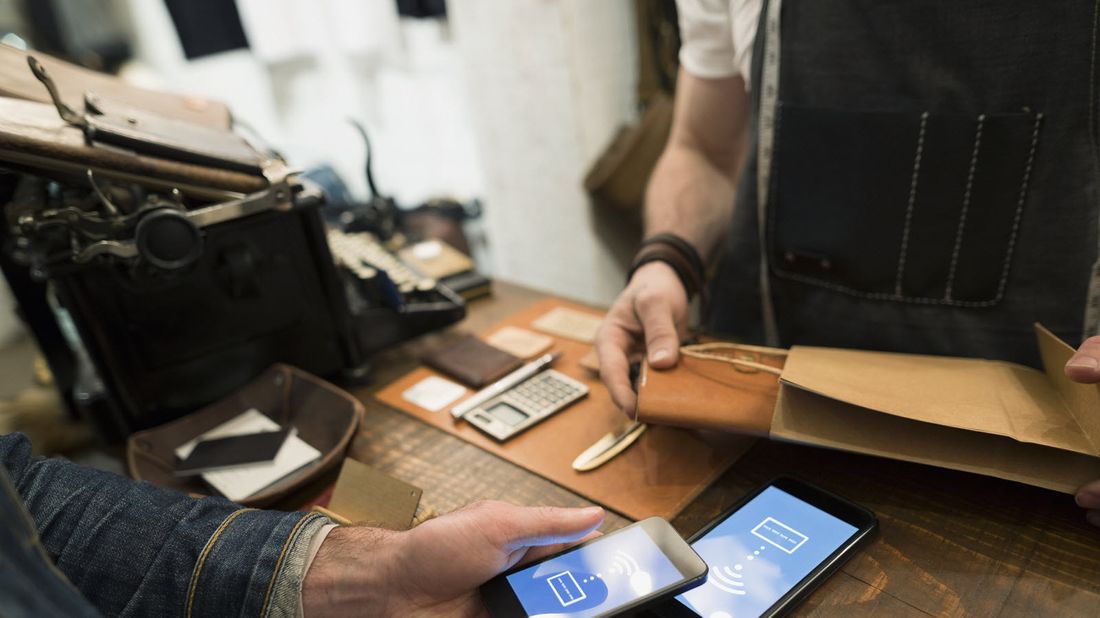The Pros and Cons of a Cashless Business

Cash’s reign as king may have quietly ended last year. According to the Federal Reserve, customers in 2018 used cash in just 26 percent of transactions. Debit cards, for the first time, were the most widely used payment method, accounting for 28 percent of all transactions.
Although cash is still used in the bulk of purchases under $25, its overall use has declined 4 percent in two years. Business owners, always focused on consumer trends, are taking note. Across the country businesses large and small are opening their doors to customers but keeping their cash drawers closed, opting to only accept cards or other forms of digital payment.
Mercedes-Benz Stadium, home of the Atlanta Falcons, went cashless this year. Starbucks opened an experimental cashless store in Seattle. Many more businesses large and small across the country are following suit and going digital. It’s a move that makes sense in many ways, but there are definite downsides. Here are some things to consider if you’re thinking about running a cashless business.
THE ADVANTAGES OF GOING CASHLESS
There’s decreased risk. When you handle cash, you’re assuming a certain level of risk (no matter how remote), ranging from honest mistakes to more sinister misdeeds. When the shop gets busy, the holidays for example, there’s an increased chance of an employee or two counting the wrong change or handling a counterfeit bill as lines grow at the register. Of course, keeping a lot of cash in the till can also tempt an employee to slip a few bills into their pocket, or worse yet, puts your business at risk of a robbery or burglary.
It’s more efficient. Going cashless can save time, effort and potentially boost sales. If you think about it, handling cash is a lot of work: Employees need to count the drawer at the beginning and end of the shift, count their tips, load the till with change and run to the bank to make deposits or get more cash. These tasks are such a routine part of business you might not notice how much time, and wages, they consume. On the other side of the register, we’ve all waited behind the customer thumbing through a coin purse to find exact change. That’s no big deal, unless of course there’s a line of customers out the door that might dissuade passers-by from walking in. Going cashless eliminates drawer-counting duties, and each transaction is a simple, fast swipe of a card or wave of a phone.
Enjoy accurate accounting. Counting drawers is time-consuming, and it’s also another link in the chain from sales to profits where mistakes can occur. When you go with a digital point-of-sale system, along with a cashless policy, all your accounting is instantly updated and accurate. And modern POS software stacks make it easier to transfer funds, track customers, build loyalty programs, analyze sales data and even integrate your brick-and-mortar shop with your web sales.
THE DISADVANTAGES OF GOING CASHLESS
You’re beholden to a software stack. Just as software giveth, it can also taketh away. There are myriad POS software providers, but there’s one thing the all have in common: They get paid per swipe. Card fees can reach 3 to 4 percent on each purchase, in addition to other vendor-specific fees – advantage cash. Here’s another consideration for going cashless: What if the power goes out? In the same vein, there’s no guarantee that POS software won’t glitch someday. If you’re a cashless operation, a software outage could cost you.
It’s prohibited in some cities. As the cashless movement gained momentum, it also fueled backlash. Critics of cashless stores argue they harm low-income and “unbanked” consumers the most. Many customers and lawmakers say a cashless business is discriminatory and refusing to take cash constitutes a violation under the Civil Rights Act. Massachusetts has had a law banning this practice for several years, and other cities around the country are considering their own bans.
You might alienate customers. Given it’s a divisive topic, any change to your cash policy could alienate new or loyal customers. Shake Shack, a New York City-based burger chain, opened a cashless location about a year ago but backtracked a few months later after receiving a healthy amount of backlash from customers.
Ultimately, as the business owner you know your customers and local market the best. While running a cashless business can remove friction points between your customers and a sale, it’s a move that should be carefully considered.
Related Articles
Take the next step.
Your advisor will answer your questions and help you uncover opportunities and blind spots that might otherwise go overlooked.
Let's talk




